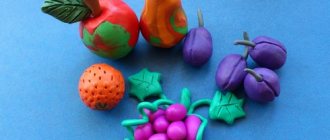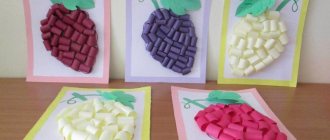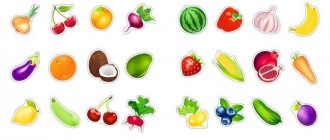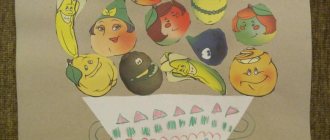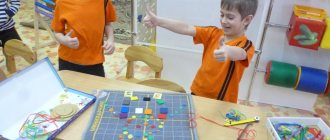Orange.
We bend our fingers one by one.
We shared an orange. There are many of us, but he is alone! This slice is for hedgehogs, This slice is for urchins, This slice is for ducklings, This slice is for kittens. This slice is for the beaver, And for the wolf it is the peel!
Compote.
We depict actions in accordance with the text:
We will cook compote, We need a lot of fruits: We will chop apples, We will chop pears. Squeeze out the lemon juice, drain, and add sand. We cook, we cook compote. Let's treat honest people.
Fruits.
We bend our fingers one by one.
This finger is an orange, He is, of course, not alone. This finger is a plum, delicious, beautiful. This finger is an apricot, growing high on a branch. This finger is a pear, Asks: “Come on, eat it!” This finger is a pineapple, a fruit for you and for us.
Conversation about fruits L.K. Schleger. 1913
Preparing for the conversation.
There are different fruits in front of the children. They name them, determine their shape, colors. Determined by touch and taste with eyes closed.
Catalogs of fruits should be at hand; drawings in paints (that is, color pictures); artificial fruit
Conversation.
What do fruits grow on? What is the name of the tree on which apples grow? Can plums grow on an apple tree? What does a ripe apple look like? What does it taste like? (Sweet, juicy). Who colored the apple so much? What protects the apple pulp? (Skin). When is the apple ripe? The beauty of an apple tree hung with ruddy apples. Has anyone ever seen an apple tree with apples? What are the apples sitting on?
Who can tell me how an apple grows? Is it always so big and ruddy? What color is an unripe apple? What does it taste like? Before the apple appears, the apple tree blooms. When does it bloom? In the spring. Has anyone seen an apple tree in bloom? We'll look at it in the spring, but for now let's look at the picture.
Let's see what's inside the apple , cut it - one lengthwise, the other across. What are the seeds in and how many are there? Why do apple trees need seeds? Why do you need pulp? She guards the seeds. What color are ripe seeds? What about the unripe ones?
What kind of seeds do cherries have? At the plum?
Who eats ripe fruits? Do some people eat and love them? Do people eat seeds? They spit them out. What do birds eat? Seeds fall on the ground, and what grows from them?
What do you sometimes find in apples, pears, plums? Worm. How did the worm get into the apple tree? Does the worm remain in the apple? He gnaws it and comes out (find an apple with a worm in it). A worm is made into a pupa, and a pupa is made into a butterfly.
What do we make from fruits? What do we make jam from? Has anyone ever seen dried fruit? Show and try. What else is made from fruits? Kvass, liqueur.
Do we grow grapes? What do they make from it? What other fruits do you know that grow in warm countries? Oranges, tangerines, lemons. Are the skins of oranges and lemons as thin as those of an apple?
What fruits does an oak tree or a Christmas tree have? Who collects and eats them? Is this fruit?
Children's work on the topic "Fruits".
- Modeling fruits, drawing them.
- Cutting and pasting (applique).
- Cutting out pictures of fruits from catalogs and magazines.
- Illustration “Apple picking”.
- Fruit stand (making a model for children's games together with the children)
Question for educators to consider:
Exactly 100 years have passed since the publication of this conversation for young children by the talented teacher Louise Karlovna Schleger! Have we and our children changed? What is different about the conversation about fruits by L.K. Schleger from modern conversations about fruits in kindergarten? What requirements for a conversation with children were taken into account when compiling this conversation? What would you change about it?
You will learn more about conversations with children and about our history of methods for developing children’s speech from the article “Conversation in kindergarten” based on materials from the book by E.A. Flerina “The Living Word in a Preschool Institution.”
Speech games with preschool children on the topic “Fruits”
Game 1. Ladder in the garden. Choose a word.
Together with your child, come up with as many words as you can about what kinds of fruits there are. For example, today we will play with the word “apple” - “What kind of apple can there be?”, and next time with the word “pear” - “What kind of pear can there be?” You can choose words on the road, on a walk, on the bus or in the car. But the best thing is to play!
How to generate interest in a word matching game?
Speech exercises are difficult for children, so it is best to carry them out in a playful way and so that the child can clearly see the result of his efforts. I came up with my own technique for this - “visual game assessment of the result of speech.” This is how I do it.
I usually draw a large tree on an easel with a felt-tip pen (you can also draw a tree on a piece of paper or on a board). On the tree I draw fruits, but they must be drawn very high from the ground. There is a ladder next to the tree. The staircase is drawn as two vertical parallel lines. But - this is important - there are no steps drawn on it!
How we play: we select words and climb up the stairs to get fruit. One word = one step.
As soon as we have chosen one word, I draw one step. We found another word - I draw another step. How many words were chosen - so many steps appeared on the ladder! With each word, more steps are added, and we climb higher and higher (you can rearrange the children’s figures according to the image of the ladder). The task is to get to the top of the tree, and for this you need to choose a lot of words!
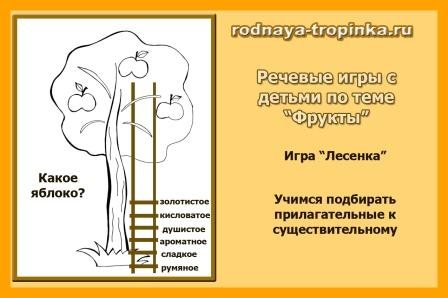
There should definitely be a pleasant surprise waiting for children at the top of the tree! When children take an apple (or plum) from the crown of a tree, on the back of the picture they should find something - a plan indicating the place where a surprise is hidden, a riddle, a small gift, a beautiful piece of paper, words of congratulations from the Gardener, a drawn medal, magic words etc.
Hint for adults
Words for the game: fragrant, big, tasty, tasteless, sour, sweet, rosy, tender, fragrant, juicy, bulk, red, yellow, golden, striped, ripe immature, ripe, round, oval, elongated, soft, hard, rotten , wormy, dried, large, small, boiled, summer, early, early ripening, southern.
Helpful advice:
- It is better if you say in this game words that are rarely found in everyday communication (“fragrant apple”, “fragrant apple”, “ripe apple”), and the children will select simpler words (“sweet apple”, “round apple”) ", "ruddy apple"). If children find it difficult, then you can suggest words to the kids with a gesture, suggest the first syllable, remind them of a familiar line from a poem in which this word appears
- This game is difficult for children at first. But later, interest and attention to words and expressive speech develops. Children begin to be very attentive to the words and literary texts that are read to them, listen to the speech of adults and notice vivid figurative epithets in it. Therefore, the game is very useful for developing attention to language, for enriching and activating children’s vocabulary, and for preparing for school.
- I really love reading Y. Akim’s poem to children, which contains many expressive epithets. Listen to it as a child and find beautiful, special, expressive words in it.
“The apple is ripe, red, sweet, the apple is crisp, with a smooth skin. I’ll split the apple in half, I’ll share the apple with my friend.” (Ya. Akim).
Here are more poems about apples, in which there are many beautiful figurative words for speech play.
Fragrant, rosy, Some are sweet, some are spicy, Some are sour, some are tart, Some are soft, some are strong. There are fresh, dried, and even soaked.
The most important sweet fruit grows in our garden. It is amber and fragrant, sweet and sour, golden. Large, round and crispy, the King's son is real! There is one with a ruddy side and a cheerful worm. Our apple tree amazingly gave us a lot of apples: very sweet, aromatic, and so pleasant to the taste.
Game 2. I know.
The first player begins: I know a lot of fruits: an apple. The second player continues: I know a lot of fruits: apple and pear. The third builds the chain further: “I know a lot of fruits: apple, pear and plum.” The task is to continue the chain and not confuse anything. An adult can make a deliberate mistake in a game, for example, naming a vegetable instead of a fruit. Will children notice this mistake?
The game develops attention and memory.
Tips for playing the game:
For children, the chain should not be too big! If there are a lot of children playing, then it is better to compose not one long chain of words, which is difficult to remember, but several chains.
When making a chain, you can string large wooden parts onto a cord. This way we can clearly see how many words we have remembered and selected.
Game 3. Let's collect fruits in a basket.
Each player names one fruit. If he named correctly, then he puts the cube in the basket. One word is one cube. The task is to fill the basket with words - cubes, remembering and naming as many fruits as possible. You can play against the clock - you need to fill the basket in 2 minutes. This is a fairly long period of time, sufficient to complete the task.
What children can name: apple, pear, quince, cherry plum, shadberry, apricot, peach, plum, lemon, orange, grapefruit, tangerine, pomegranate, pineapple, persimmon, banana, mango, avocado, kiwi and other fruits.
You can “put” in the basket not only the names of fruits, but also phrases. For example: “fragrant apple” - put a cube. Now we need to come up with the next phrase - “golden pear”. Next is a new phrase – “blue plum”. And so we fill the basket.
Game 4. Classification. Fruits and vegetables.
Children are given pictures of mixed fruits and vegetables. You need to put fruits in one basket and vegetables in another.
Be sure to ask your child: “Why do you think this is a fruit?”
To summarize children’s ideas about fruits and clarify the general concept of “fruit,” with children 4 years of age and older, you can conduct an exercise with pictures to develop logical thinking, “What are fruits?”
Step 1. Place 3-4 pictures of fruits in front of the child. For example, apple, pineapple, banana, plum. You can also use real fruits or dummies. Ask what's different
these items?
Let the child compare
them with each other and tell them that they differ: a) in color - “the plum is purple and the apple is scarlet”, b) in size “the plum is small and the pineapple is large”, c) the nature of the surface (smooth, rough), d) shape (round, oval, long - short).
Step 2. After this, ask the main question: “ How are these pictures similar?” What do these items have in common?
" It's a difficult question. If necessary, help your child with guiding questions.
- What do people do with them? Are eating. So, they are similar in that they are what? Right! Edible.
- Where do they grow?
Yes, they all grow not on the ground, but on trees, in the garden. - Can they grow on their own in a field or forest?
No. Who planted them? Human! Can they grow without care or watering? So how are they similar?
Step 3. After discussion, conclude with your child that all these pictures depict plants - fruits. And again discuss the main characteristics of fruits. Fruits are plants, they are always edible, they grow in the garden, they are planted and grown by people, people take care of them. People make jam, compotes, jellies, marmalade and other delicious treats from fruits.
Step 4. Ask them to select fruits from pictures of different foods. Why is this a fruit, you ask? Maybe it's a vegetable? Emphasize the difference - fruits grow on trees in the garden. And vegetables grow on the ground in the garden.
Game 5. What is made from fruits? Cheerful cooks.
At the beginning of the game, we remember all the dishes that are made from fruits. Remember the most favorite dishes of your children and your family.
Hint for adults: juice, compote, jelly, fruit drink, jam, jelly, marmalade, candied fruits, raisins, dried apricots and other dried fruits, Turkish delight are made from fruits. Do you remember anything else? I will be glad to see your additions in the comments after the article.
And then we start playing with the children - “cooking” their favorite dish. For example, let's make marmalade. We depict how we stir the mass in a saucepan, how we spread it with a spoon on a baking sheet, and then cut it into slices with a knife and treat the toys. And at this time we talk about marmalade, learning to form adjectives from nouns.
Let's make marmalade from different fruits, and we will succeed (we start the phrase, and the children suggest the answer). Apple marmalade - what should we call it? Apple.
- Plum marmalade – what kind? Plum. (A common mistake is “creamy”! Please note to the child that creamy is made from cream. And made from plums is plum)
- And from pears? Attention! There are common mistakes here, the correct option is pear.
- And what kind of peaches? Peach!
- From apricots - ? Apricot.
- From orange - ? Orange.
- From tangerine - ? Tangerine.
And then we start playing in the cafe. Each time we don’t just say a word, but depict a whole scene - we treat visitors, taste it, lick our lips, make suggestions, ask questions. And at this time we say: “Oh, how fragrant our apple marmalade turned out. Would you like to try the pear one? Maybe you’ll like plum better?” If a child makes a typical mistake, for example, says “apple” instead of “apple,” then it is best to treat the guests – the toys – with apple marmalade, saying this word many times in the game in different phrases: “Would you like to treat yourself to apple marmalade? It is very tasty!". Or: “Our apple marmalade is very aromatic and not cloying, you will like it!”
One of the options for such a game is to persuade the character to try apple marmalade, praising it in every possible way. And each time repeating its name and reinforcing the correct version of the word in speech. Naturally, at first the toy refuses, and then agrees. And she really, really likes apple marmalade. And your baby, while playing, masters a new word for him, and will no longer make mistakes in it! And before you know it, you will learn to speak grammatically correctly!
In the future , you will only need to remind him of the correct option in everyday communication: “Remember, we played with fruits. What is the correct name for apple marmalade? Correct your mistake. What a clever girl! Yes, apple!” Never repeat your child's mistakes. It is very important for a child to hear grammatically correct speech from adults!
Game 6. Call me affectionately.
- Apple - ? Bullseye.
- Plum - ? — Slivka
- Apricot - ? - Apricot.
- Pear - ? - Grushka.
- Orange - ? - Orange.
- Mandarin - ? - Tangerine.
- Lemon - ? Lemon.
Game 7. Wizards.
Give your child a magic wand and let him turn into a wizard. An ordinary pencil wrapped in foil can act as a stick. For beauty, you can attach a brush, bell or other attribute of magic to the pencil.
The task of our little wizards is to grow a lot of fruit. An evil wizard bewitched the garden, and only one apple grew in it. But our little wizard waves his magic wand, and a lot of things happen? Apples!
- There was one plum, a wave of the stick, and it turned out to be a lot? Drain.
- Instead of one orange, many grew? Oranges.
- There was one pineapple, but now there are a lot of other things? Pineapples.
- There was one pear. Has it become too much? Grush.
- There was one banana hanging on a branch, but now there are a lot? Bananas.
In this grammar game, your child gets to know the genitive plural of nouns. You will be able to see and correct common grammatical errors. For example, children may say that there are a lot of “apples” instead of the correct version of “apples.” Children often say that there are a lot of “pears” or “pears” instead of the correct version of “pears”. If the kids make mistakes, then play the following game with them to consolidate their speech skills.
Game 8. What happened.
Place 6 pictures in front of your child. Each picture depicts fruits: bananas, apples, pears, plums, pineapples (you can take another list of pictures). Let the baby close his eyes, and at this time you remove one of the pictures. What's missing? Grush.
In this game, the child also learns to correctly use words in the genitive case.
Visual material (pictures)+ for this game and other games in the article
has already been posted in the section of the website “Library of games, pictures and materials for activities with children” - “Fruits: pictures for children, tasks, speech games.”
Game 9. Fourth wheel.
- Lemon, tangerine, orange, cucumber.
- Pineapple, boletus, apple, pear.
- Pear, plum, fruit, kiwi.
- Plum, pear, compote, apple.
Be sure to ask children why they chose this particular word as extra. Children have their own logic, and it also has the right to life! In addition, the ability to explain and prove one’s point of view, to build arguments is very important in life and begins to develop in a child in preschool age! Take advantage of these baby development opportunities!
Game 10. Guess who?
This entertaining and fun game makes it very easy to learn how to use genitive plural nouns correctly. It happens so naturally! Children love to play, they play the game many times, and each time they develop and consolidate their speech skills without any teaching, boring exercises or long explanations - naturally and playfully!
To play you will need pictures, each of which depicts several fruits. You need two identical sets.
One of the children is the leader. He is given one set of pictures. All participants in the game take a picture from another set.
The presenter's task is to guess who has what. The dialogue goes like this:
— Do you have lemons? No, I don't have lemons! Do you have oranges? No, I don't have any oranges ! Do you have apples? No, I don't have apples ! Do you have pears? No. I don't have pears! Do you have tangerines? Yes, I have tangerines.
It is discussed in advance how many questions the presenter can ask one player. Usually this is 4-5 questions. If he was able to guess, then the children change roles in the game. The presenter becomes the player, and the child whose picture was guessed goes on to guess further.
If the presenter has not guessed right after 4 questions, then he continues to guess.
You can play this game together with your baby. Then the adult asks questions, and the child answers. Then switch roles.
Fun physical education minutes:
Harvest.
Show actions: carry a ladder, set up a ladder, pick pears, put them in boxes, load them into the car.
2. How a gardener grew an apple tree.
Show actions: the gardener digs a hole, plants an apple tree, whitewashes the trunk of the apple tree, waters, fertilizes, prunes, and collects fruits.
3. Apple.
That's an apple! It's full of sweet juice! (stand up, arms to the sides, stretch) Stretch your hands, pick an apple! (hands up, stretch up) The wind began to shake the twig, it’s hard to pick an apple! (arms up, bend to the sides) I’ll jump up, stretch out my hand and quickly pick an apple! (jumping up, clapping overhead)
The benefits of fresh vegetables for the body
Plant food is necessary for normal human life. It is an indispensable source:
- fiber, which cleanses the intestines, stimulating peristalsis, which ensures normal digestion;
- vegetable fats that lower cholesterol and promote active metabolism;
- vitamins of groups A, B, C, which are necessary for most processes occurring in the body;
- minerals (potassium, calcium, magnesium, phosphorus and others), they are the ones who trigger important metabolic processes;
- antioxidants that cleanse the body of various toxins and radionuclides, and at the same time prevent aging;
- essential oils contained in some vegetables (for example, garlic), which have bactericidal properties.
However, it should be remembered that the composition of vegetables is greatly devalued by heat treatment , which destroys most beneficial enzymes, such as enzymes . These enzymes ensure easy digestion of food, allowing you to save internal resources. As a result, energy is saved, which is spent on self-cleansing of the body.
Another undoubted benefit of raw vegetables is the alkaline reaction, which allows you to neutralize the acidic environment that promotes the growth of bacteria and fungi. Regular consumption of vegetables in their natural form helps restore the acid-base balance, the basis of all vital functions of the body.
To saturate your body with useful substances, your diet should consist of a variety of vegetables, the composition of which allows you to properly balance your diet. We recommend including in your diet:
- carrot;
- beets;
- pumpkin;
- turnip;
- cabbage;
- celery;
- horseradish;
- garlic;
- ginger;
- radish;
- radish.
The composition of these vegetables is distinguished by a large number of vitamins and minerals that have a beneficial effect on the health of the body.
Carrot
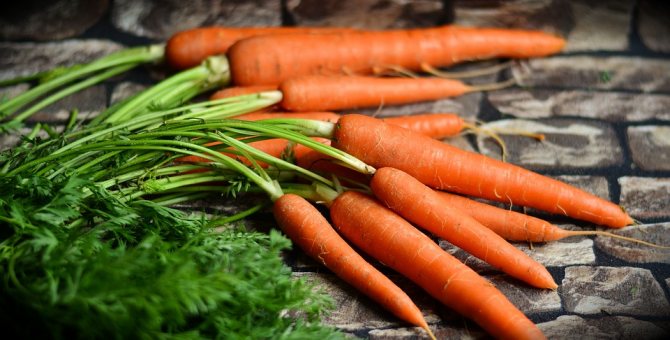
This vegetable is a valuable source of beta-carotene, a precursor of vitamin A, from which the vitamin is synthesized in the body. In addition, fresh carrots contain a whole range of useful substances, namely:
- B vitamins (B1, B2, B5, B6, B9, B12);
- vitamins D, C, E;
- macroelements (chlorine, magnesium, sodium, potassium);
- trace elements (selenium, chromium, cobalt, copper, fluorine, manganese, iodine).
This rich composition has a positive effect on the cardiovascular system, regulates water-salt balance, and strengthens bone tissue.
At the same time, carrots have a pleasant taste, which is best revealed in its raw form. It is suitable both for a nutritious snack on its own and as an ingredient in a vegetable salad. Regular consumption of juicy carrots will help maintain youth and strengthen the immune system.
More detailed information about the benefits of carrots is described in the ARTICLE .
Beet

This root crop is the leader in mineral content among vegetable crops. Beets are rich in iron, which is necessary to prevent anemia. The vegetable also contains a large amount of zinc, which increases the duration of insulin action. That's why it is recommended for diabetes. At the same time, the calorie content of a raw vegetable is only 40 kcal, which allows it to be included in dietary dishes.
The root vegetable is known for its cleansing properties. In its raw form, beets effectively fight radioactive particles, toxins and poisons, removing them from the body. It is also used as a prophylactic against:
- liver dysfunction;
- disruptions in the gastrointestinal tract;
- changes in blood pressure;
- osteoporosis;
- atherosclerosis.
In addition, there is a scientific conclusion that the pigment that colors the vegetable burgundy prevents the growth of malignant cells, stopping the development of oncology.
More detailed information about the benefits of beets is described in the ARTICLE .
Pumpkin

Not only healthy, but also a very filling vegetable due to its high protein content, which allows it to be used as a complete lunch.
In its composition, pumpkin is close to carrots, with which it has the same orange pigment. The large vegetable is also rich in B vitamins, vitamins A, C, E, D, PP, K, and the rather rare vitamin T.
Pumpkin is an invaluable assistant for the proper functioning of the kidneys and liver. The compounds contained in the vegetable help dissolve stones formed in these organs, removing them along with other waste and toxins. It also has a positive effect on the genitourinary system, promoting the removal of excess fluid, which is useful for edema.
Cabbage
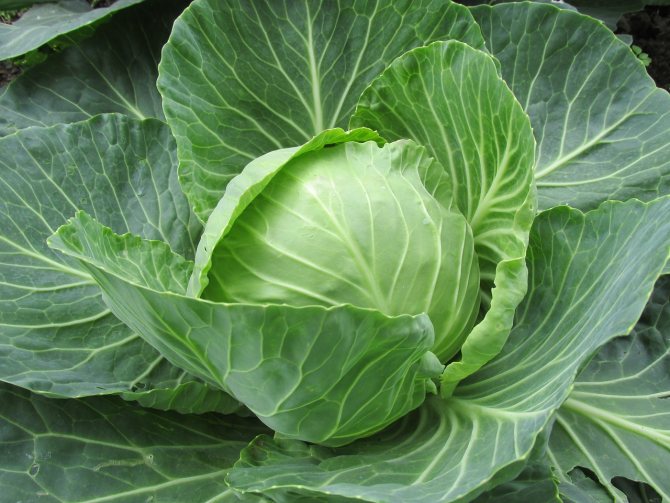
Cabbage is considered one of the most ancient crops that existed before our era in North Africa. The cultivation of healthy vegetables was practiced in ancient Greece, from where it began its victorious march across Europe. Familiar with valuable culture in China and Korea.
Cabbage has an impressive list of useful elements:
- potassium salts;
- phosphorus salts;
- manganese;
- calcium;
- copper;
- iodine;
- magnesium;
- iron;
- phytoncides (natural antibiotics);
- lactose;
- vitamins A, B1, B6, P, K.
In addition, the vegetable contains 16 free amino acids, including the most important for the body - lysine, histidine, methionine, tyrosine.
Cabbage, rich in fiber, is indispensable for the prevention and treatment of diseases of the gastrointestinal tract. The vegetable also contains rare vitamin U, which protects the gastrointestinal tract from ulcers. And cauliflower helps even with advanced forms of gastritis. Its regular use lowers cholesterol levels and strengthens the walls of blood vessels.
More detailed information about the benefits of cabbage is described in the ARTICLE .
Turnip
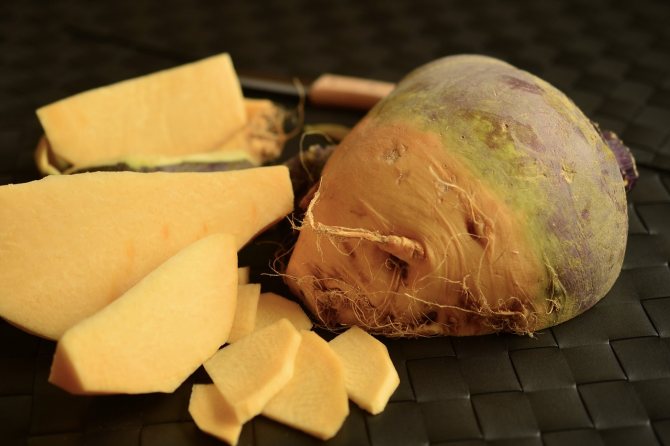
This healthy vegetable was undeservedly forgotten for some time. But in Ancient Rus' it was considered a staple food because of its availability, nutritional value and beneficial effect on the entire body.
With the expansion of information resources about the benefits of vegetables, turnips are beginning to regain their former positions. Possessing a unique composition, it helps not only to provide organs with the necessary elements, but also effectively fights diseases.
- Regular consumption of turnips reduces the risk of joint damage and the development of osteoporosis, since the vegetable is a source of calcium and potassium;
- Turnips contain powerful enzymes that help the liver remove waste and toxins, as well as fight carcinogens entering the blood;
- The root vegetable and its tops contain antioxidants that protect blood vessels from the formation of cholesterol plaques;
- Adding raw turnips to your diet will help prevent cancer in the lungs, colon and rectum.
Turnip is a real treasure for girls who take care of the condition of their skin and hair. The vitamins and minerals contained in the vegetable keep hair shiny and silky, stimulating its natural growth. And a large amount of antioxidants slows down premature skin aging, prevents the appearance of wrinkles and pigmentation.
Celery
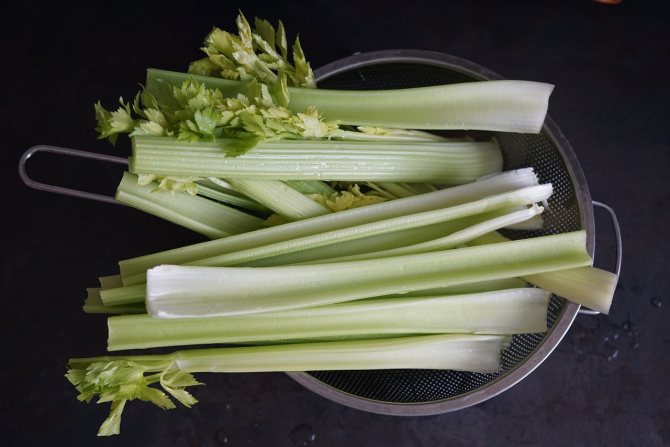
Celery is a valuable vegetable that provides the body with vitamins A, C, B1, B2, and a number of minerals, such as:
- Magnesium;
- Iron;
- Calcium;
- Phosphorus;
- Iodine.
Celery is known for its effect on the nervous system, which normalizes sleep, improves performance and overall tone of the body.
In addition, the vegetable has a negative calorie content - when digested, the body spends less energy than it receives. This makes it indispensable for people who want to lose weight.
In order to get maximum beneficial properties, it is recommended to consume celery as freshly squeezed juice. Its vitamin and mineral composition activates metabolic processes, helping to cleanse and rejuvenate the skin. And for medicinal purposes, celery juice helps to gently remove sand from the kidneys.
Horseradish
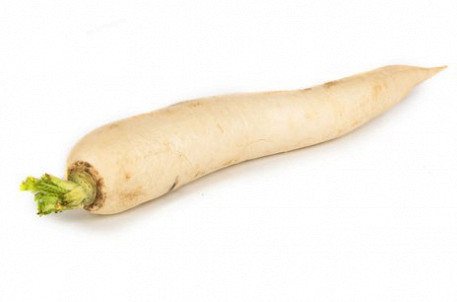
Horseradish leaves are as beneficial for health as its root. They are filled with phytoncides and essential oils, which act on the body as a natural antibiotic, protecting the immune system. They are recommended to be consumed as vitamin salads.
Horseradish root contains fiber, B vitamins, vitamin C, E, PP and a whole range of minerals:
- iron;
- phosphorus;
- magnesium;
- Sodium;
- sulfur;
- calcium.
This composition improves appetite and stimulates the stomach, which makes it indispensable for people suffering from gastritis.
Garlic
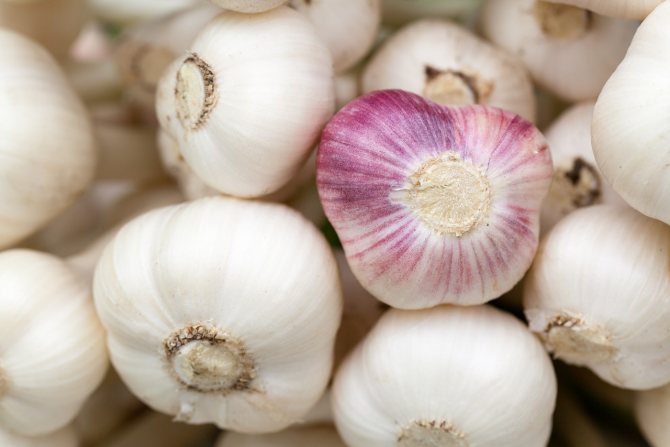
Just 4 g of garlic per day allows you to saturate the body with almost all the necessary vitamins and minerals, because it contains more than four hundred different components. The main ones are antioxidants that help fight infectious diseases.
- Garlic produces active substances that destroy pathogenic bacteria. It has been scientifically proven that the vegetable is effective against diphtheria bacilli, streptococci and staphylococci;
- Allicin contained in garlic has such a powerful bactericidal property that even eating a small amount of the vegetable can cause a serious blow to bacteria and fungi;
- Recent scientific studies have shown that phytoncides contained in garlic reduce the risk of developing cancer;
- In folk medicine, garlic is used against colds. Moreover, it begins to act in the oral cavity, destroying carriers of viral infections. It is also indispensable for fighting intestinal parasites, as a result of which the skin is cleansed.
Garlic has a pronounced taste and aroma. It is great for adding to salads, enhancing their taste. Garlic can be used as an ingredient in formulations to strengthen the immune system.
Ginger
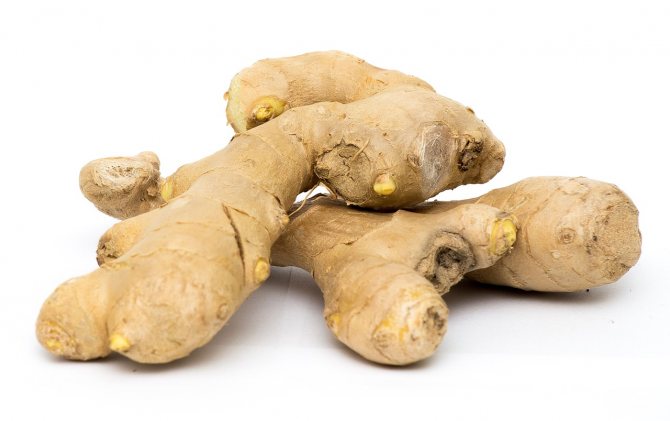
Among all the spices, ginger root ranks first in terms of the amount of micro-, macroelements and vitamins. This aromatic plant with a unique taste is grown all over the world.
Ginger is a natural cleanser for the body. It dissolves toxic compounds that settle on the walls of blood vessels, accumulate in the liver and kidneys, removing them naturally. This makes it indispensable in the fight against various diseases that arise as a result of slagging in the body.
Ginger, rich in biologically active components, effectively fights bacteria and fungi. Penetrating directly into the cells, it affects the lesion due to its anti-inflammatory properties. Therefore, it is recommended for viral and colds, as well as for general strengthening of the immune system.
Medicines are made from this valuable product. With their help, blood vessels are cleansed of cholesterol, the liver of poisons, and the intestines of toxins. Such systematic cleansing helps prevent the development of cancer cells and improve the health of all internal systems.
To preserve beneficial elements, it is recommended to consume ginger root raw, without heat treatment. Therefore, it is better to replace the popular ginger tea with chewing a small piece of fresh root, which will improve the condition of your teeth and gums.
The properties of ginger will be appreciated primarily by those who suffer from a weak digestive system. It is indispensable in the fight against diarrhea, colic, gas and nausea. Ginger also successfully copes with the latter during toxicosis in pregnant women.
Radish

The healing properties of radish were well known to ancient people. Different nations valued their “own” varieties of root vegetables: black, white, green and red radish. Thus, the Greeks considered this vegetable the main product on the table, and the ancient Egyptians used radish as the main source of strength and endurance.
The unique composition of the vegetable crop allows it to replenish the necessary supply of vitamins in the autumn-winter period, when not many vegetables are available. The juicy root vegetable contains:
- essential oils;
- minerals (sodium, phosphorus, magnesium, potassium);
- amino acids;
- fiber;
- phytoncides;
- vitamins of group B, E, C.
The main benefit of radish is its bactericidal and anti-inflammatory effect, which maintains health by increasing immunity.
Radish
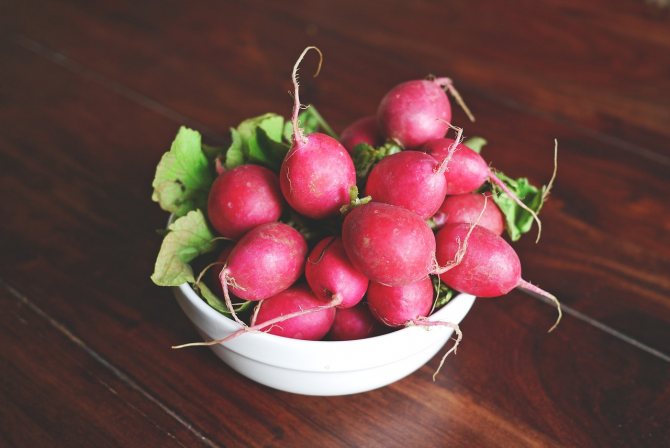
Juicy and crispy radishes are a storehouse of minerals and vitamins. Allows you to start strengthening your body in the spring. The taste of radishes has a slight bitterness, which is due to the presence of essential oils that have a positive effect on the nervous system.
Juicy and tasty radishes are so rich in vitamins that 100 g of the product will provide the daily norm of useful elements for the body.
The vegetable is quite nutritious and surpasses tomatoes and zucchini in terms of protein. The composition includes easily digestible carbohydrates, which makes the menu containing radishes balanced. At the same time, the calorie content of the product is only 14-16 kcal per 100 g. The benefits of vegetables, especially fresh ones, are undoubted. Regular consumption of vegetables guarantees good health and excellent functioning of all body systems.
Include the above raw vegetables in your diet and stay healthy!
Fruit or Vegetable: What's the Difference?
It is a common misconception to believe that vegetables differ from fruits in that they grow on different plants: herbaceous or tree-like. Biologists have a different opinion on this matter, which clearly explains the difference between these groups.
Fruits are the fruits of plants that appear after the flowers fade and the ovary forms. Their main feature is that they have seeds that can differ in density or size. In addition, a shell can form around the seeds: hard (shell) or soft (pulp). Following this principle, many plant fruits that we usually classify as vegetables are actually fruits. So, for example, every botanist will say that cucumbers, tomatoes, pumpkins, eggplants are fruits, since they have seeds.
Vegetables include parts of a plant that are suitable for consumption. These can be tubers, soft stems, leaves or inflorescences, that is, those parts of plants that are not associated with reproduction.
So, to determine the type of fruit, you need to follow a simple rule: if the fruit has seeds, then this is a fruit, and if not, then it is a vegetable. The benefits of the latter are invaluable for the body, because in addition to the high content of valuable fiber, vegetables also contain protein and a whole range of essential microelements.
